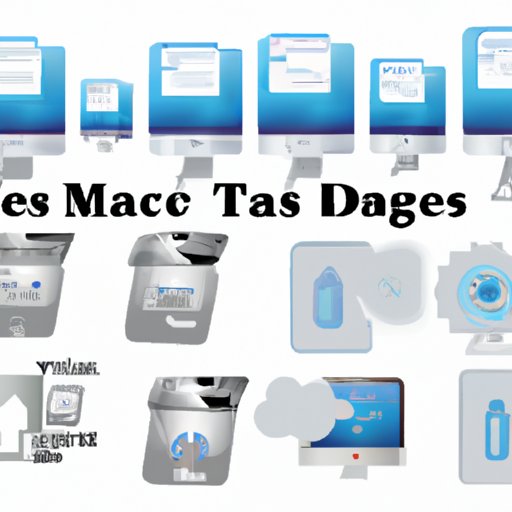Introduction
When you open the “About This Mac” window on your Mac computer, you’ll see a breakdown of the available storage capacity. That includes the amount of disk space you have left to use, as well as the amount of “other storage” that’s already been used. But what exactly is other storage? And how can you make sure that your Mac computer is running at peak performance? In this article, we’ll explore other storage on Mac computers and provide tips for optimizing its usage.

Exploring Different Types of Other Storage Options
Other storage is made up of a variety of system files and folders, including system files, cache files, log files, and temporary files. System files are essential for the proper functioning of your Mac computer, while cache files are created by applications and websites to store data and speed up loading times. Log files are used to record activities and events, while temporary files are created when programs are running and then deleted when they’re no longer needed. All of these types of files can take up a significant amount of space on your Mac computer, so it’s important to understand how they’re being used and how to manage them.
Maximizing Your Mac’s Other Storage Capacity
The first step in maximizing your Mac’s other storage capacity is to delete any unnecessary files. This includes old applications, large documents, and unused music files. It also includes clearing out the Trash folder, which can accumulate a lot of unwanted files over time. Once you’ve cleared out the Trash, you should also look for large and old files that could be taking up a lot of space. If you find any, you can delete them or move them to an external storage device.
You may also want to consider using a third-party app to help you clean up system junk. These apps can scan your Mac for files that are no longer needed and help you free up valuable disk space. They can also detect any corrupted files and provide options for resolving them.
Troubleshooting Common Issues with Other Storage on Macs
If you’re having trouble freeing up enough space, there are a few things you can do. First, try to identify any corrupted files and delete them. You can also try resetting your Mac’s SMC and PRAM, which can help resolve slow performance issues. If all else fails, you may need to upgrade your Mac’s internal storage.

Tips and Tricks for Optimizing Other Storage on a Mac
Once you’ve freed up some disk space, there are a few things you can do to keep your Mac running smoothly. For starters, you can disable unnecessary startup items to free up more disk space. You should also make sure you have enough RAM, as this will help your Mac run faster. Additionally, you can use external storage devices for backup, and manage your iCloud storage to ensure you’re not using too much space.
Conclusion
In conclusion, other storage is an important part of managing your Mac computer. It’s made up of a variety of system files and folders, and it’s important to understand how it’s being used. To maximize your Mac’s other storage capacity, you should delete unnecessary files, empty the Trash, and clean up large and old files. You can also use a third-party app to help you clean up system junk and troubleshoot any issues. Finally, you can use tips and tricks like disabling unwanted startup items and using external storage devices for backup to help optimize other storage on your Mac.


